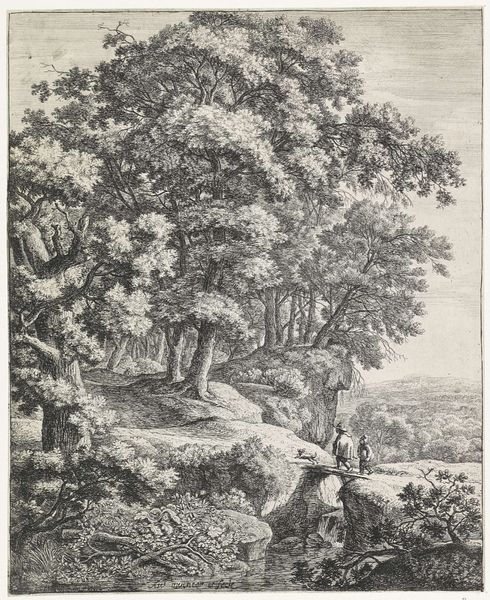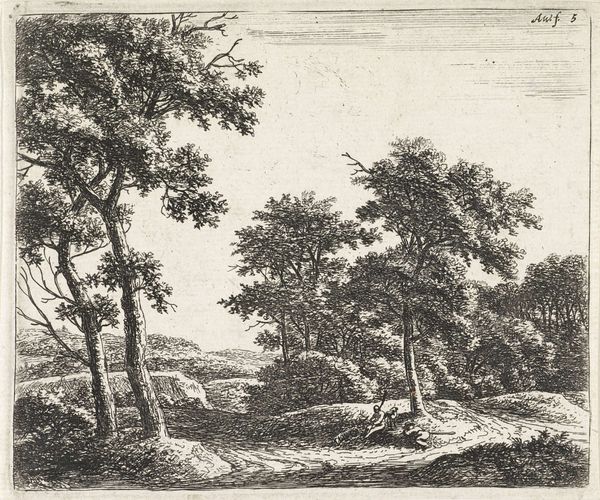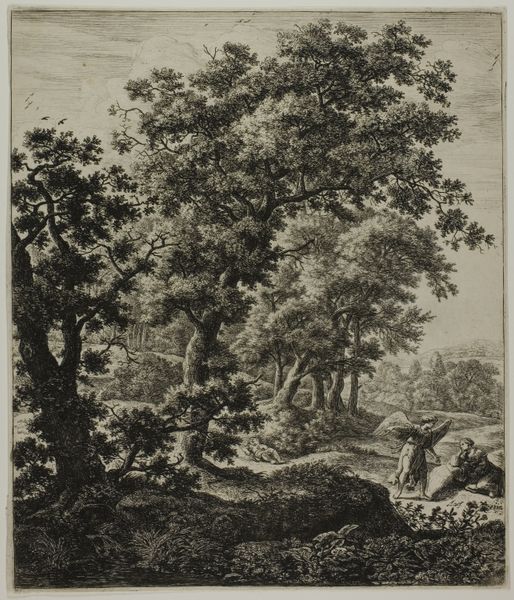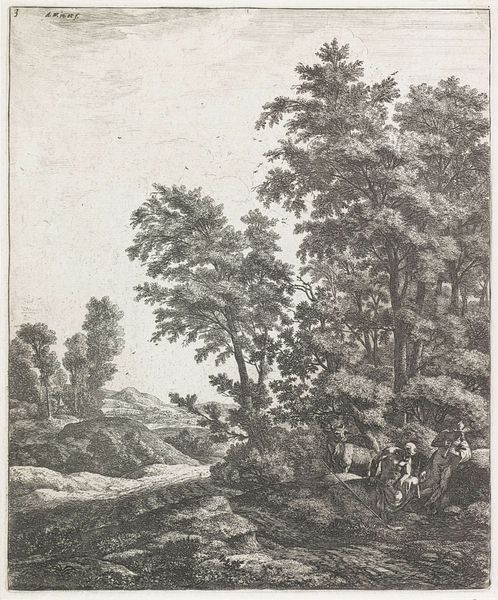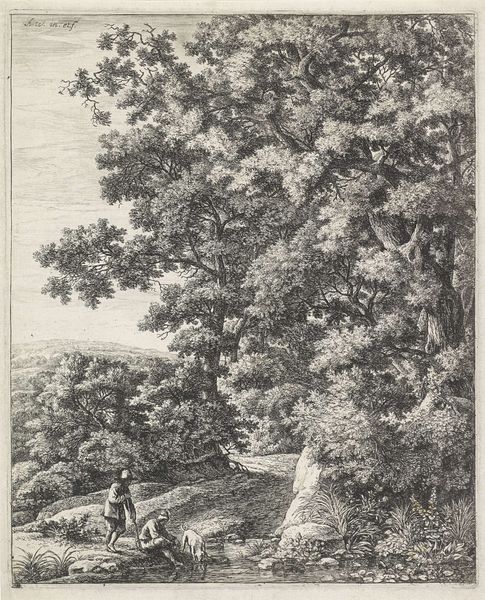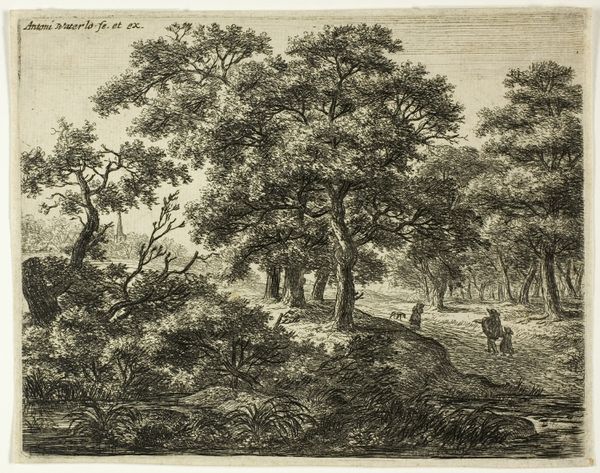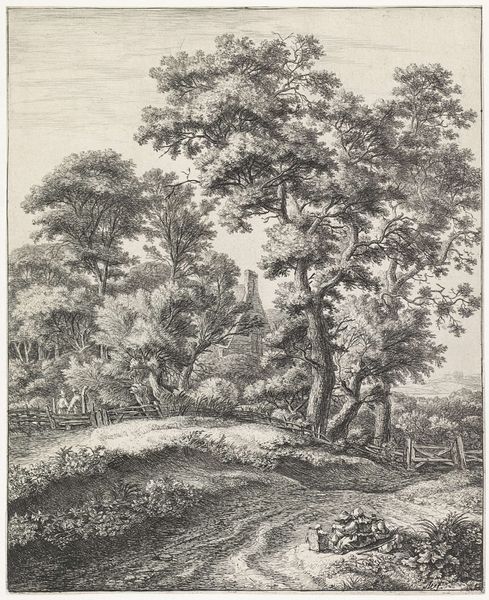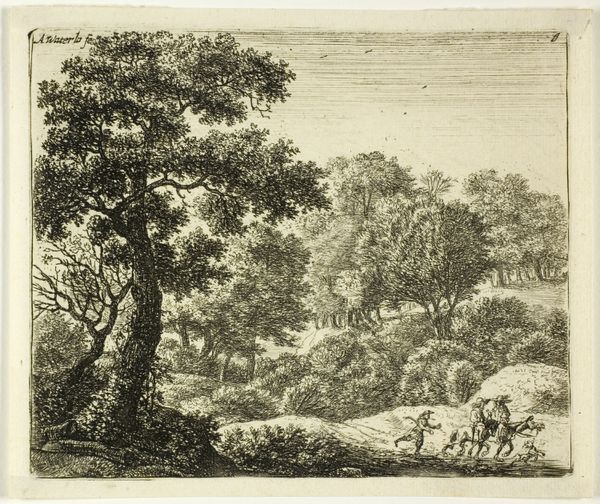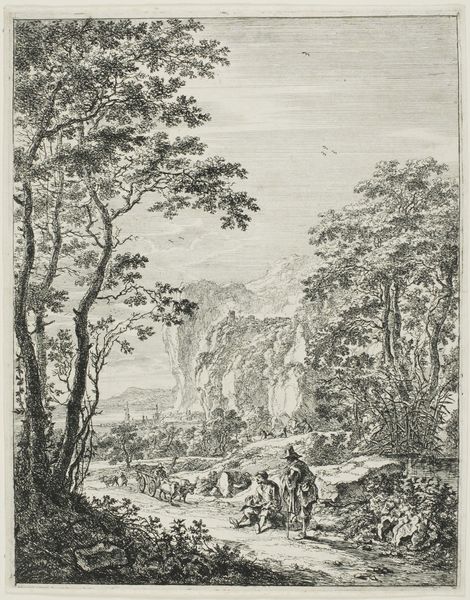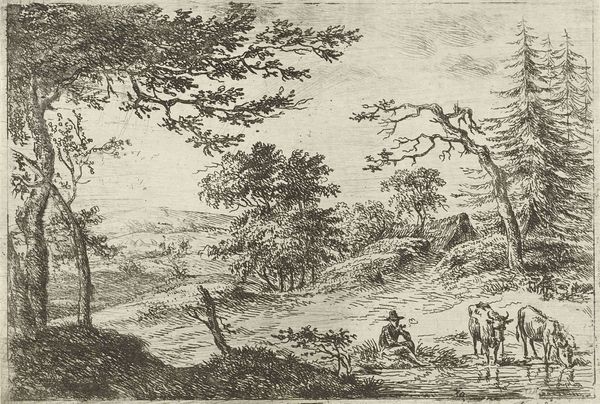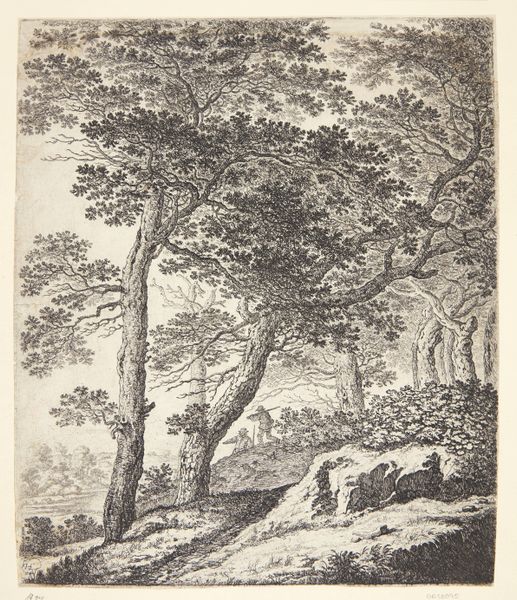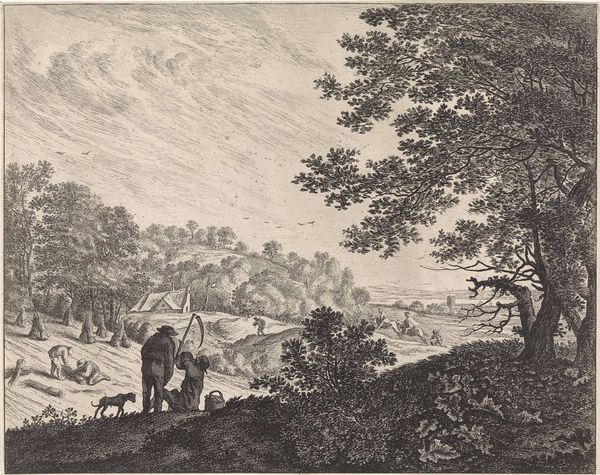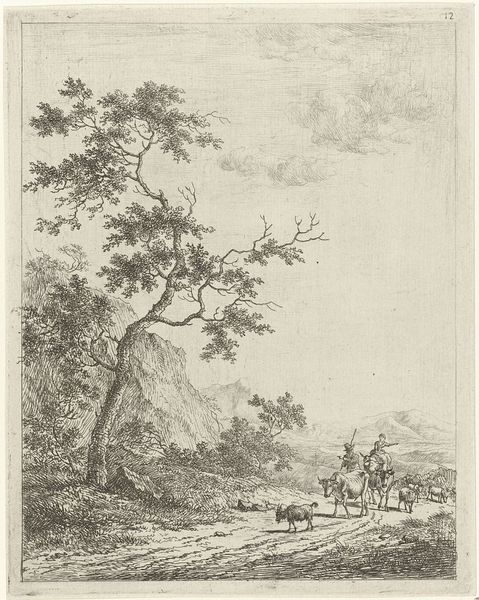
Hagar's Departure, from Six Landscape Subjects from the Old Testament 1650 - 1660
0:00
0:00
drawing, print, etching, paper
#
drawing
#
baroque
# print
#
etching
#
landscape
#
paper
Dimensions: 292 × 246 mm
Copyright: Public Domain
Editor: So, this is Anthonie Waterloo’s “Hagar’s Departure,” an etching from between 1650 and 1660. It’s part of a series depicting scenes from the Old Testament. It strikes me as a rather melancholic landscape, even though it depicts movement. What do you see in this piece, from a historical perspective? Curator: Well, immediately, the title draws us to the biblical narrative. But beyond the explicit story, it’s important to consider how these landscapes were being viewed in the 17th century. Waterloo was working in a period where landscape art was gaining independence, wasn't just backdrop. It offered an arena for exploring ideas about nature, nation, and human experience, and these prints helped democratize art for a wider audience. Have you noticed the prominence given to the natural elements? Editor: Yes, definitely. The trees almost seem to frame the figures, dwarfing them. Is that deliberate? Curator: Precisely! In Baroque landscape, there's often a push and pull between nature and humanity. These details also tell us about social stratification; where these were created for the art market and to what tastes these artists catered to. By centering the ordinary and blending biblical events, what can we infer of its patrons at the time? Editor: So, by emphasizing the landscape, and creating prints, Waterloo wasn't just telling a Bible story, but also participating in larger conversations about the role of nature and art’s public accessibility in society. Thank you, this definitely has helped put everything in context. Curator: My pleasure; examining artworks this way helps highlight their broader historical importance and impact.
Comments
No comments
Be the first to comment and join the conversation on the ultimate creative platform.
